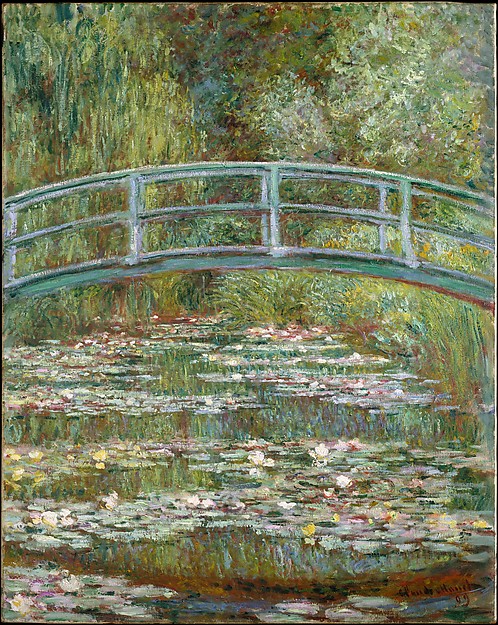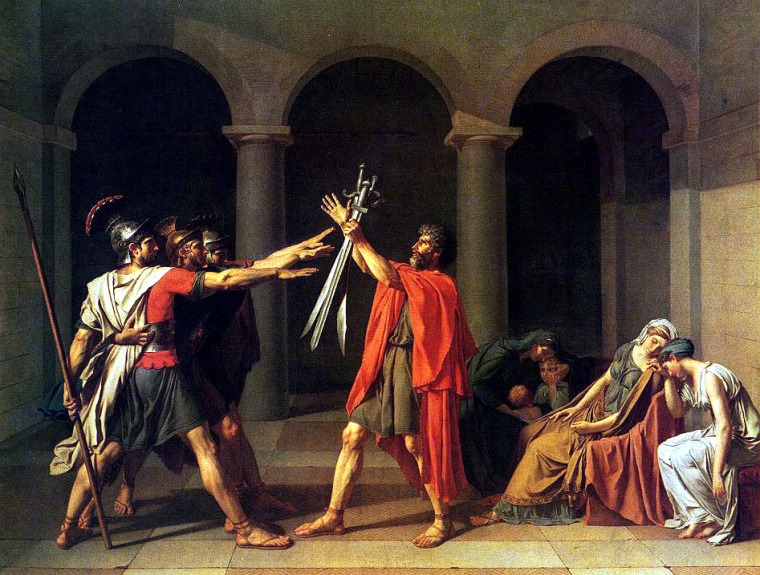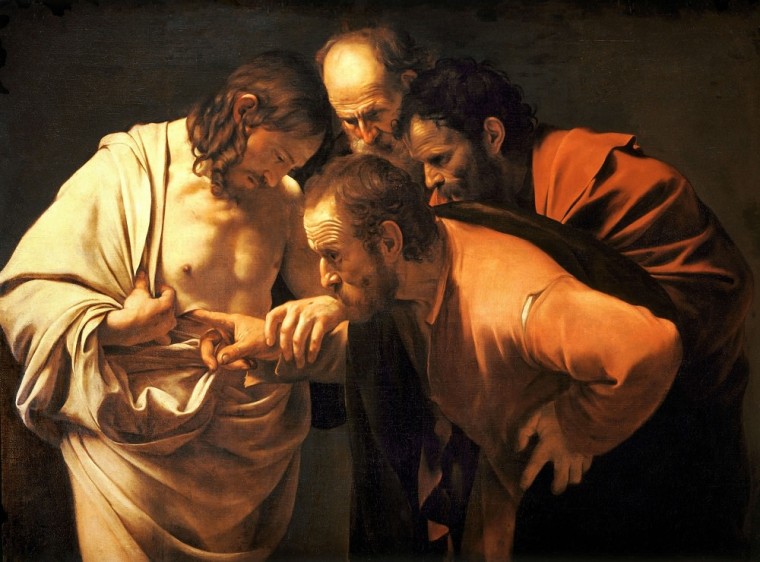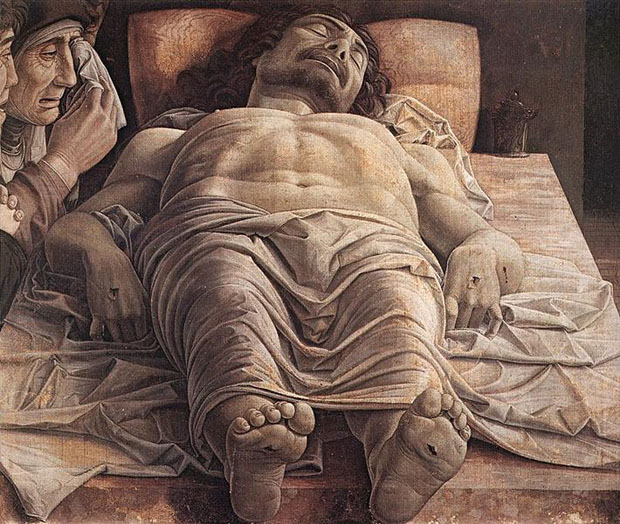Basic Information:
For this blog I have decided to look at three paintings done by the artist Jacques-Louis David. The three paintings are, from left to right, Oath of the Horatii (1785), Bonaparte Crossing the Great St. Bernard Pass (1801), and The Combat of Mars and Minerva (1771). Due to the timeline presented by Jacques-Louis David Biography I believe that the The Combat of Mars and Minerva and Bonaparte Crossing the Great St. Bernard Pass were made in Paris, and the Oath of the Horatii was made when David was studying in Rome.
Revolution:
The theme that I have chosen for this blog is Revolution and the Arts. Although not all of these directly relate to revolutions of the day, I think there are revolutionary connections that tie them all together. For example, lets start at the earliest painting, The Combat of Mars and Minerva. This painting portrays the fight from the Iliad between the goddess Minerva and God Mars. There is a connection here to the revolutions that take place at this time around the world and in the near future. This foreshadows the battles that are about to come in revolutions. The Web Gallery of Art also describes this painting as “hints of the direction that his art would eventually take” (1) in his future revolution paintings.
The next of those paintings is the Oath of the Horatii. This painting, like the last, does not portray a scene directly relating to the revolutions taking place. However, Khan Academy has some insight into how these do relate to the revolutions. It portrays the virtues of honor and courage of those defending their country. This is similar to the virtues that were being portrayed by the revolutionaries in the American and French revolutions. It is also noted that these men taking the oath are young and fit. This ties into the revolutions. The idea of revolution and deviation from ways hundreds of years old are young, and are portrayed in these three men.
The last painting has the most to do with revolution. It is Bonaparte Crossing the Great St. Bernard Pass, which has large ties with the French revolution and the spreading of French ideals throughout Europe. Napoleon.org talks about this painting as being made for King Charles IV of Spain. The painting is meant to show the “hero of the revolution” (1) which is Napoleon. This painting is meant to show the aftermath of the revolutions that have taken place at this time. It shows the power and prestige that can come from revolution and the change that occurs.
My View:
I think that my favorite portrait here is the Oath of the Horatii. I love ancient Rome and think that this picture does what it’s meant to do. It shows the power and ideals of those bound to protect others. Not only that it is just a really well done painting. Bonaparte Crossing the Great St. Bernard Pass is my second favorite painting. I think that it’s a great heroic picture. I can’t imagine any other pose to make someone more heroic and portray the ideals of the French or American revolution. If someone was going to make a portrait of me, I’d hope it would be something like that. The Combat of Mars and Minerva is the last picture on my list. It’s a nice painting and it does what it needs to do, but compared to the others I don’t think it even compares. It’s pretty dark for my tastes, still a good painting though.
Works Citied:
“David, Oath of the Horatii.” Khan Academy. N.p., n.d. Web. 26 Feb. 2016. Site
“Jacques-Louis David Biography.” Bio.com. A&E Networks Television, n.d. Web. 26 Feb. 2016. Site
“The Combat of Mars and Minerva by DAVID, Jacques-Louis.” Web Gallery of Art. N.p., n.d. Web. 26 Feb. 2016. Site
“BONAPARTE CROSSING THE GREAT ST BERNARD PASS.” The Paintings of Previous Months. Napoleon.org, n.d. Web. 26 Feb. 2016. Site



















